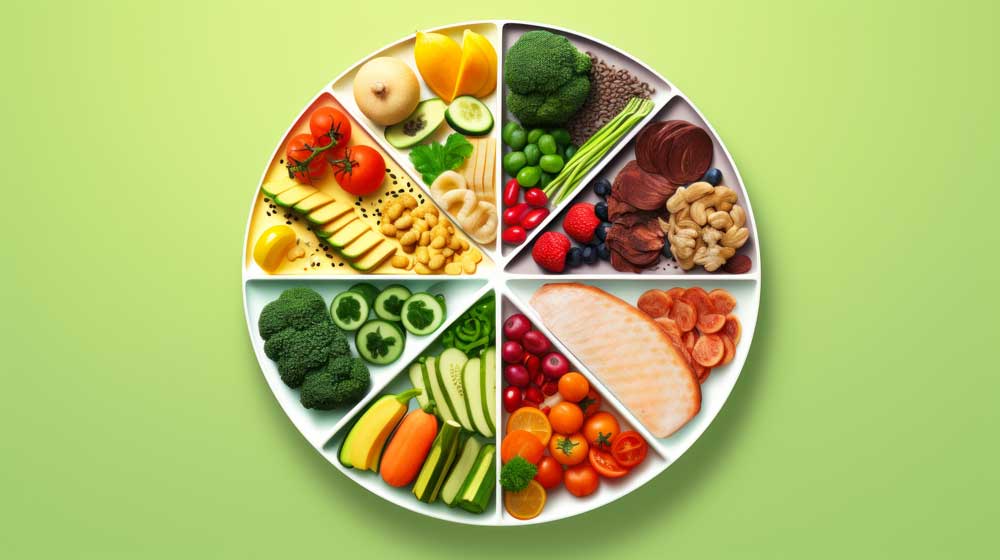Eating for Wellness is more than just a trend—it’s a lifestyle choice that prioritizes health, vitality, and long-term well-being. In a world where fast food and processed meals are common, choosing nutrient-rich foods has become essential. The concept of Eating for Wellness encourages individuals to be mindful of their daily food intake and to make choices that fuel the body with essential vitamins, minerals, and antioxidants.

People who focus on Eating for Wellness often experience better energy levels, improved digestion, and a stronger immune system. This approach promotes the idea that our food is the foundation of our health. By embracing Eating for Wellness, we take an active step toward preventing chronic illness and enhancing our overall quality of life.
Understanding Nutrient-Rich Diets
What Does It Mean to Eat Nutrient-Rich?
A nutrient-rich diet means consuming foods that provide high levels of nutrients relative to their calorie content. This includes vegetables, fruits, whole grains, lean proteins, and healthy fats. When Eating Wellness, these choices become the cornerstone of your daily meals.
Nutrient-rich foods help regulate body systems and support physical and mental performance. These foods are naturally low in sugar, sodium, and unhealthy fats. Eating Wellness through nutrient-dense meals ensures you’re getting the most benefits from every bite.
Benefits of Eating for Wellness
How Nutrient-Rich Choices Improve Health
One of the primary benefits of Eating Wellness is increased energy and vitality throughout the day. Whole foods fuel the body more efficiently than processed options. Nutrient-rich choices stabilize blood sugar and reduce the risk of energy crashes.
In addition, Eating Wellness strengthens the immune system and promotes better heart health. These foods reduce inflammation and support optimal function of organs. Committing to Eating Wellness can also aid in weight management and mental clarity.
Key Foods to Focus On
Building a Nutrient-Dense Meal Plan
When Eating Wellness, it’s important to include a variety of colorful vegetables and fruits. Leafy greens, berries, carrots, and tomatoes offer antioxidants and vitamins essential for cellular health. These foods should be the foundation of your daily diet.
Whole grains like quinoa, brown rice, and oats provide complex carbohydrates and fiber. Lean proteins such as chicken, tofu, and legumes build muscle and support metabolism. Adding nuts, seeds, and healthy oils like olive oil completes your Eating meal plan.
Tips for Embracing Nutrient-Rich Eating Daily
Making Wellness a Consistent Habit
To make Eating Wellness a daily practice, start by planning your meals ahead of time. Prep your ingredients and choose recipes that incorporate nutrient-dense foods. Keeping your kitchen stocked with healthy options reduces the temptation to make poor choices.
Another helpful tip is to read food labels and avoid items with excessive additives or sugar. Stick to fresh and minimally processed foods whenever possible. With consistent effort, Eating becomes an easy and sustainable part of your routine.
Overcoming Common Challenges
Staying Motivated on Your Wellness Journey
One common challenge when Eating Wellness is managing cravings for unhealthy foods. A helpful strategy is to replace them with healthier alternatives that still satisfy. For instance, fresh fruit or dark chocolate can curb sweet cravings without derailing your diet.
Social events and eating out can also be tricky. Choose dishes that align with your Eating goals, such as salads with lean protein or grilled vegetables. Don’t be afraid to ask for modifications to fit your dietary needs.
Long-Term Impact of Eating Wellness
Wellness as a Lifelong Commitment
The long-term impact of Eating Wellness includes reduced risk of chronic diseases such as diabetes, hypertension, and heart disease. Nutrient-rich diets support healthy aging and improved longevity. When wellness becomes a lifestyle, it leads to a healthier, more active future.
Embracing Eating also cultivates a positive relationship with food. It shifts the focus from restriction to nourishment. Over time, your body and mind both begin to reflect the benefits of intentional, wholesome eating.
Conclusion
Incorporating Eating for Wellness into your life is a powerful step toward a healthier, happier you. By choosing nutrient-rich foods, staying consistent, and overcoming daily challenges, you create a foundation for lasting wellness. Remember, every smart food choice you make is an investment in your long-term health.
The journey of Eating is not about perfection, but progress. Start small, stay focused, and allow the benefits to unfold. With each meal, you’re not just eating—you’re thriving.